Misc
New Jersey’s Most Iconic Urban Legends
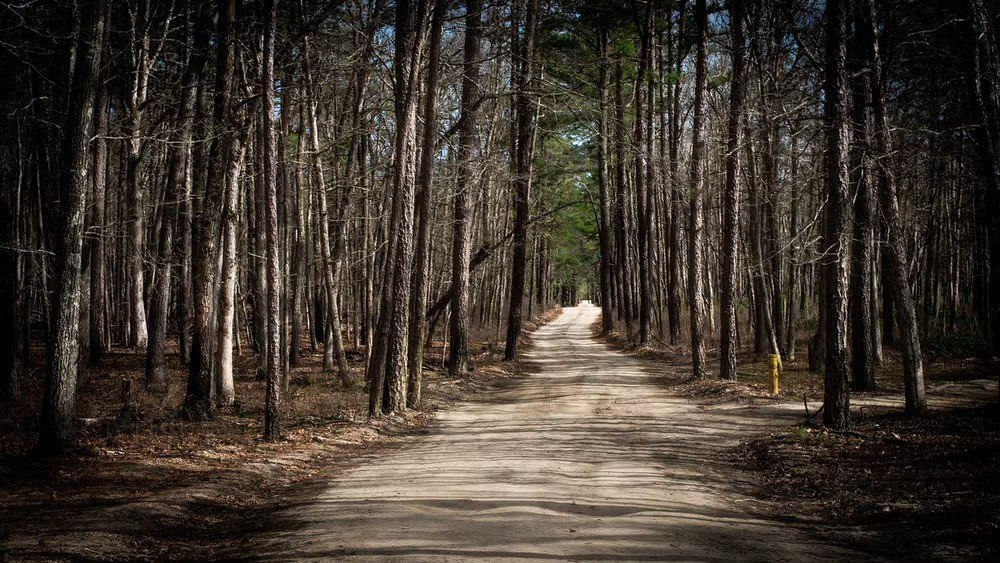
Every state has its myths and legends, but growing up in New Jersey, the state’s ominous and bizarre history hits differently. Once teens get their driver’s license—especially in the fall when the leaves start to change—it becomes a rite of passage to seek out the strange and eerie. Legends are passed down from one generation to the next, and now shared and sought out online. From haunted roads to legendary creatures, New Jersey is full of eerie locations and urban legends just waiting to be explored. New Jersey Urban legends are so ingrained into our identity and culture that the only major league sports team we can call our own is named after the Jersey Devil.
Exploring New Jersey’s Urban Legends
Even though New Jersey is the fourth-smallest state, every region feels like its own unique country. When trying to come up with how our state’s identity is wrapped up in these urban legends and locations, I found myself breaking it down into three categories: North Jersey, Central Jersey (it’s real), and South Jersey. These three regions and their own legends have always stood out to me as not only scary but integral to who we are as a state.
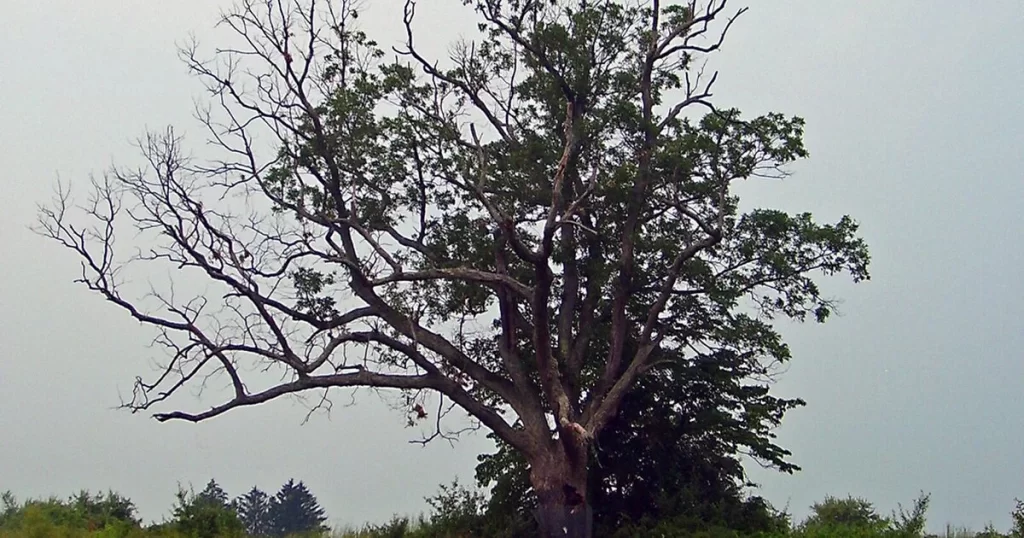
The Devil’s Tree (North Jersey — Basking Ridge)
The evil of the Devil’s Tree is as real as its roots in the ground. It’s widely believed that the tree was once a meeting place for the Ku Klux Klan during colonial times, as Bernards Township served as a KKK stronghold in New Jersey. According to legend, the tree was used to hang escaped slaves—a horrific reminder of one of the darkest chapters in our nation’s history. While such atrocities should haunt every inch of this country, few places seem to carry that weight in a supernatural way. The Devil’s Tree is one of them.
Curses and Supernatural Tales of the Devil’s Tree
But its legend doesn’t stop there. It’s also said that a farmer once hanged himself on the tree after murdering his entire family. Other stories speak of suicides, or even warnings that anyone who mocks or damages the tree is destined for an untimely death.
I remember learning about it as a kid—the images online and in Weird NJ gave me chills. The photos show a desolate, gnarled tree standing alone, radiating menace. My neighbor, who was older than me, told stories of friends who broke off branches only to have their car break down on the way home. Some say the tree can’t be cut down, and anyone who tries is cursed.
Visiting the Devil’s Tree Today
Today, the tree looks different from the photos you’ll find online. It still stands, but on private property. To reach it, you have to uncomfortably park nearby and trek through brush and weeds. Everything is overgrown, with a fence not far off. You’d never know something so steeped in darkness is just sitting there, hidden in plain sight. It’s completely untended, like a relic left to rot, but sorrow still seems to hang in the air the moment you approach.
Why the tree has never been removed, I don’t know. Maybe it’s the perfect metaphor for New Jersey’s and America’s ugly history: the remnants of our past still standing, quietly reminding us of the horrors we’d rather forget.

Trenton Psychiatric Hospital (Central Jersey — Trenton)
There are several shut-down and condemned insane asylums riddled throughout the state, and for many teens, sneaking into and “touring” them has turned into a rite of passage. The most infamous of them all is the Trenton Psychiatric Hospital.
The Horrors of Dr. Henry Cotton
Founded in 1848, the Trenton Psychiatric Hospital is the state’s oldest psychiatric hospital. While large parts of the original buildings and wards have closed down, the hospital is still functioning today. What separates Trenton from other facilities is the evil Dr. Cotton.
Dr. Henry Cotton became the medical director in 1907. At the time of his hire, he was considered a progressive doctor for his implementation of occupational programs that are barbaric and cruel by today’s standards.
Barbaric Practices and Patient Suffering
He believed that infections were the cause of mental disorders—this led to inhuman procedures and untimely deaths of patients who received unnecessary operations. He started removing teeth from patients, but “disappointing” results had him extending his treatments to include the removal of gall bladders, stomachs, uteruses, ovaries, testicles, and colons.
These mutilation practices were so inhuman that they’re worse than any supernatural story we could dream up.
The Lasting Impact of Dr. Cotton
After his death in 1933, a review found that he had killed 45 percent of his patients through these practices. Worse, these practices continued well after his death into the 1950s. It’s unfathomable that this torture was able to continue for so long.
Today, not much paranormal activity is spotted in the new areas of the hospital. However, those who explore the long-abandoned buildings have encountered Dr. Cotton’s apparition and heard the sounds of tortured patients.
Should Trenton Psychiatric Hospital Be Preserved?
It’s interesting that the hospital still stands today as a hybrid of the old and new. Even when most of our psychiatric hospitals were condemned, this one still stands. If you know how, you can tour the old one—with caution. Some argue that the old building needs to be condemned to put its gruesome history behind us. But stories like Dr. Cotton and the horrors of the facility shouldn’t die with history—they should be discussed as a reminder that everyone receiving medical care should be treated with dignity.
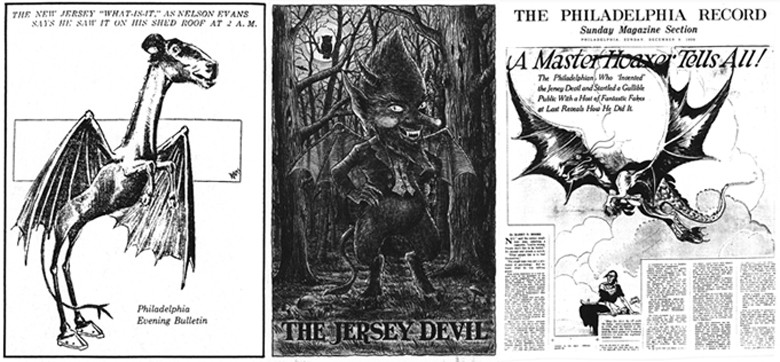
The Jersey Devil (South Jersey — The Pine Barrens)
You may not know the tale of the Jersey Devil, but you have likely heard the name through the cultural zeitgeist.
Maybe you first heard the name during the infamous Pine Barrens episode of The Sopranos. Perhaps your only reference to the Jersey Devil is watching the hockey team play in Newark, but 66.1 miles away is where the real devil lives: in the Pine Barrens. There are many tales of the supernatural lurking around the dense forest of the Pine Barrens, but none of them are as memorable as the Jersey Devil.
The Origin Story of the Jersey Devil
The legend starts in 1735, when Mother Leeds, a witch in her own right, birthed her 13th child, said to be hideously monstrous. That “child” is believed to have been born with a horse-like head, cloven hooves, a tail, and bat wings. The boy quickly grew into a giant creature and flew away. Since that fateful day, the devil has been terrorizing the Pine Barrens. People have told tales of the beast slaughtering their livestock and wrecking their vehicles.
Historical Accounts of the Jersey Devil
The first written mention of the “Jersey Devil” is in the 1859 Atlantic Monthly. Author W.F. Mayer speaks of townsfolk telling him about the tale of the “Leeds Devil” while he was exploring and writing about the Pine Barrens.
The Jersey Devil is our most “fun” urban legend that we get to own as a state. Not every place has its own Loch Ness Monster or Mothman, but that is what makes New Jersey special. The well of origin stories and imagery that people have conjured is almost endless, as more and more New Jersey residents report sightings and share their own horror stories. For almost 300 years, residents have passed down stories of the devil’s antics and terror in the state’s most desolate area.
The Hunt for the Jersey Devil
Some still offer a $100,000 reward for our devil. Even for $100,000, I don’t think I would want to be caught dead wandering the Pine Barrens searching for the unknown. Some have seen him on the Philadelphia side, but I wouldn’t want to be caught dead wandering around there either. But I do like to think that there is an otherworldly creature lurking around in one of America’s oldest and densest forests just waiting for the right time to strike.
Here in Jersey, we are home to countless tales of the supernatural and strange locations. What I have written about today barely scratches the surface. Every town seems to have its own haunting tale. I implore all readers to learn more about their state’s legends and perhaps even explore some if you dare!
Misc
[INTERVIEW] Musings on Monstrous Menstruation with the Cast and Crew of ‘The Cramps: A Period Piece’
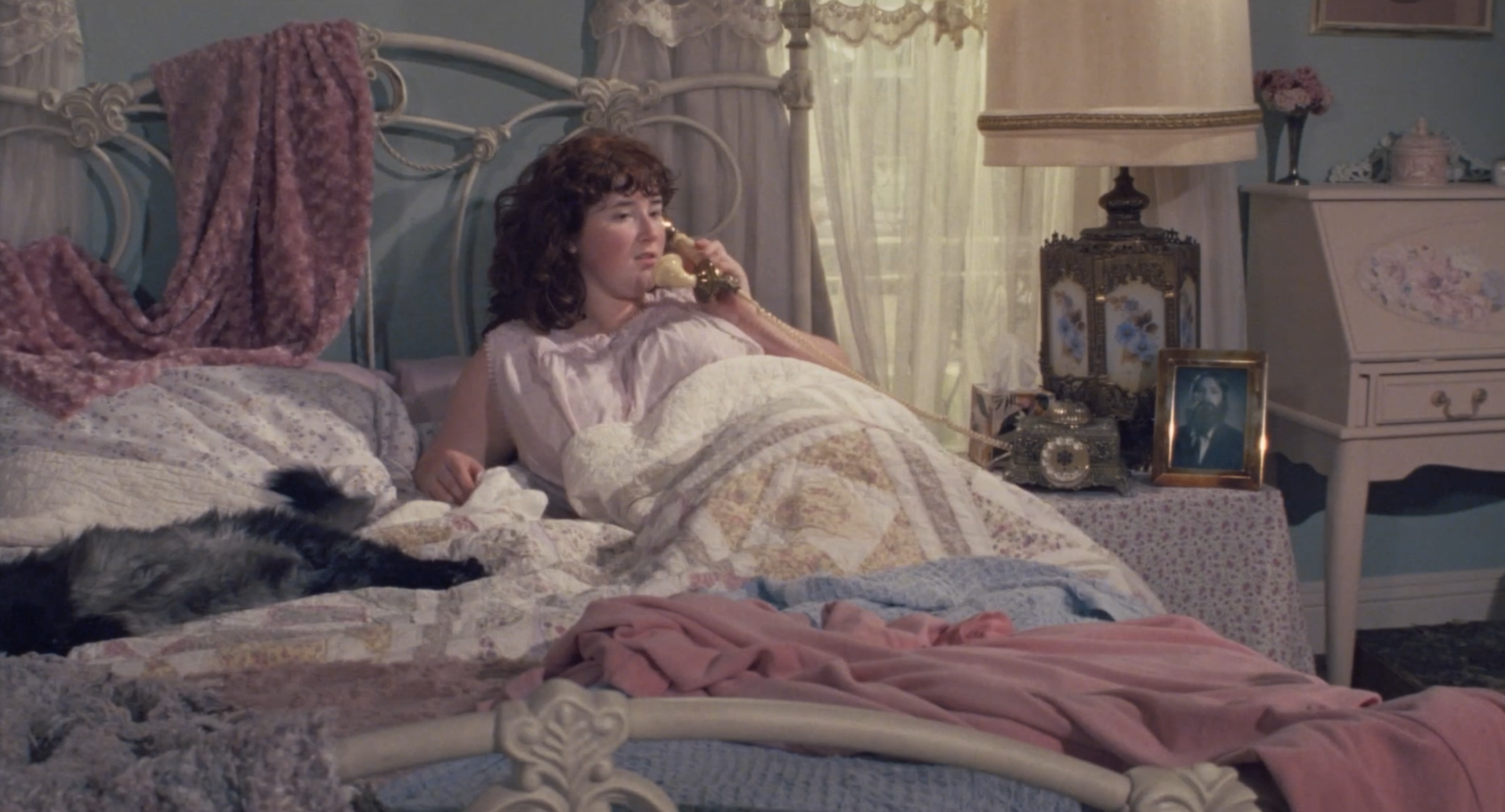
Periods suck. Everyone who menstruates will tell you that, yet this annoying, often painful thing that happens to our bodies for one week out of every month for most of our lives is conspicuously absent from most media. When periods do crop up in horror movies in particular, they tend to be linked to the downfall of the person experiencing them. Writer-director Brooke H. Cellars’ movie The Cramps: A Period Piece is the rare exception.
Inspired by the filmmaker’s own struggles with endometriosis, an underdiagnosed condition that leads to immensely painful periods, The Cramps follows Agnes (newcomer Lauren Kitchen), whose period cramps manifest in strange and monstrous ways. But, crucially, Agnes Applewhite herself is never framed as a monster, just a shy young woman trying to escape her repressive family life and find her place in the world. She gets one step closer after accepting a job offer to be the shampoo girl at a local salon run by Laverne Lancaster (drag queen Martini Bear) and staffed by kooky characters like the prudish Satanist Teddy Teaberry (Wicken Taylor) and the ditzy Christian Holiday Hitchcocker (Michelle Malentina). All the while, Agnes’ cramps are wreaking havoc on the rude men and dismissive doctors that she encounters.
A spiritual successor to the kind of movies John Waters was putting out in the 1970s, The Cramps: A Period Piece is equal parts funny, campy, and heartfelt, bolstered by fun practical effects that horror fans will love. I sat down with Cellars, Kitchen, and Taylor to chat about the future cult classic after its Fantastic Fest 2025 debut.
The following interview has been lightly edited for clarity and conciseness.
An Interview with Director Brooke H. Cellars and Actors Lauren Kitchen and Wicken Taylor of The Cramps: A Period Piece
Samantha McLaren: Brooke, this film is inspired by your own journey with endometriosis. How do you find the humor in what was presumably a difficult situation over many years?
Brooke H. Cellars: Being suppressed and growing up with no friends, I had to figure out my own way in life. And when people would make fun of me, I kind of had to develop a thicker skin through humor. That was the only way I could get through—by making light of things, or trying to make people laugh, being the weirdo, saying stupid things. That’s how I connected with people, just being ridiculous with each other. And it grew to where I actually had a sense of humor.
I guess that’s kind of like a mask in dealing with what’s actually going on, my family life or being in pain… So when I wrote the story, it came naturally. I didn’t want to make it scary, because it’s scary in real life. I wanted something entertaining but meaningful, and to connect with people in a way where they can be outspoken and it’s okay. I want it to be cathartic for them, and to maybe make them forget for a little while, but also feel a place of warmth in a horror movie where they least expect something.
It’s so rare to see any horror film about periods, but especially one that isn’t about the abjection of periods. I’m curious how you approached making it funny but not at the expense of people who menstruate, while also finding the horror and making it a positive, uplifting story.
BHC: When I started making short films, I just wanted to make a slasher, because I love old, 1970s slashers. So when we made [“The Chills,” Cellars’ first short from 2019] for no money in my house with my husband and his sisters, who are not actors, I knew I wanted to make scary stuff, but I didn’t know I wanted to say something else. It does say something, but I didn’t do that intentionally—I was just trying to make a scary movie, but it’s like something was trying to come out of me.
It came out when we finally made Violet Butterfield: Makeup Artist for the Dead (2022), which is kind of set in the same world as The Cramps. We shot it on film and kind of developed the world, and just put more intention into it and more of myself, my story, and being finally honest about what’s going on. At the same time, I had stopped talking to my family. I was finally living my life in my late 30s and got into filmmaking, as I’d wanted since I was a kid and never thought would happen. I just said, fuck it—this is what I’ve always wanted to do, I’m running with it, and I’m doing what I want now. I knew the story I wanted to tell, because I was still going through it while I was writing the script. I was having my hysterectomy. Finally, somebody was helping me with my endometriosis, after like 15,000 doctors told me “sorry.”
Lauren, this is your first role—how did you come to be involved in the project, and what drew you to the script?
Lauren Kitchen: I knew Holiday, played by Michelle [Malentina], and I knew Pussy D’Lish [Jude Ducet], who played Clydia. We had just done a community theater production of Rent together. And I followed Brooke… I was a fan of “Violet Butterfield” and the whole aesthetic, so I wanted to follow up on their Instagram. And then I saw an audition announcement for The Cramps, and I just loved it—it had the sixties florals, so cute. I’ve always been told I’m like an old soul, so I was like, I should go for it.
I remember saying to Jude that I really relate to the main character, but I probably won’t get it, I don’t have the experience. I went into in-person auditions fully thinking, “I’m not gonna get it, but at least I’ll give myself a pat on the back for doing it.” And it turns out, when you go in thinking you won’t get it, you get it!
Wicken Taylor: She killed.
LK: Everyone was so supportive, and having done stage acting and studying it in school helped to bridge the gap between stage and film. There are times when you have to make adjustments. I love the subtleties of film. On stage, you’re acting for the back row, but then in film, you can do something as subtle as an eye movement that you can say so much.
You being new to film brought something so interesting to the role, because there’s that vulnerability—you’re finding your confidence in a way that mirrors Agnes’ journey.
LK: Agnes is finding herself and her chosen family, and I’m also finding Lauren and my confidence through it.
There are so many references and visual homages in the film—obviously John Waters, but also The Tingler, and so many films that I grew up loving. I’m curious if Brooke gave you all homework to watch?
LK: I watched Peeping Tom.
WK: And The Red Shoes. Blood and Black Lace. And she had me watch [The Jerk] because Bernadette Peters was an inspiration for Teddy, and then also Grease for Frenchy.
LK: Female Trouble. And I watched Cry-Baby too for Johnny Depp.
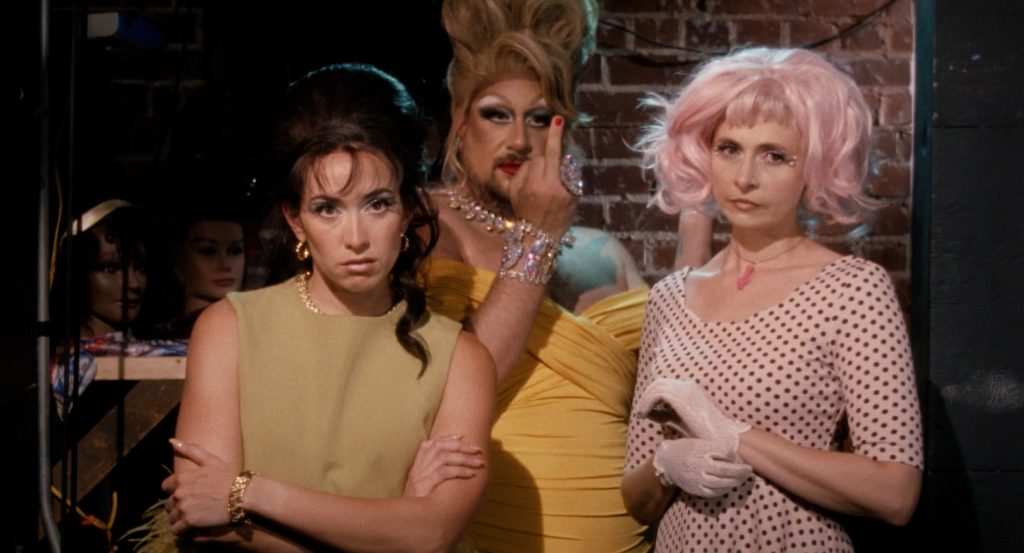
One thing that drew me to The Cramps is that there’s so much drag talent in the film—drag kings as well as queens, and bearded queens, which you don’t often see. It was subversive when John Waters featured drag performers in his films in the 1970s, and it has somehow looped back around to being subversive again. Brooke, how important was it for you to have that queer element in this story?
BHC: Very important. My own family never accepted me for anything, and that’s why things were so confusing. I always thought I had a normal family, and I definitely didn’t have a normal family. They treated me as if I wasn’t normal. Of course, I wasn’t, but it was okay—I just didn’t know it was okay to be who I was. I didn’t have a lot of friends, and even my brothers and sisters bullied me; my parents bullied me. I was bullied till I was a senior, and even when I was an adult.
Nobody was embracing me. I came from a very small conservative town and a conservative family, so I was always ashamed to be me, even though I couldn’t stop being me. […] It was when I moved away from home to the “big city” of Lafayette, Louisiana [laughs], I started waiting tables and stuff, just doing my own thing, and it was the queer community that I was always told “don’t talk to those people”… these are the people that told me it’s okay to be me. They had so much confidence that I wanted to have. They accepted me, they supported me. They made it so comfortable to just be myself. […] I think a chosen family is very important, and I wanted to celebrate them along with what I’m going through. They’re a part of me.
The hair salon feels like the perfect encapsulation of that chosen family, full of weirdos who found each other. Speaking of, I want to talk about Teddy, because I’m obsessed with Teddy. Wicken, how did you find the right tone for that character who is the perfect subversion of the typical church lady, but also so deadpan, and so kind?
WT: Brooke writes amazing characters. I was like, what do you mean? And she said, “darkness is goodness.” So I took that away and I interviewed a Satanist, and I was doing research, but because this is not our world, it’s a fantastical world that Brooke created, I had so much freedom. So, what is Satanism to Teddy? And what I love so much about her is that we can see that she’s a good person—it just kind of radiates from her. She embodies the idea that it’s okay to be you, that you are loved, and that you are one of us, and that you are safe.
One of my most favorite things about the relationships in the film is that Holiday and Teddy are best friends. Holiday is a Christian—a cursing Christian—and Teddy is a prude Satanist, and they’re best friends.
How did you build the aesthetic for the film? It picks and chooses from a lot of different decades, but still feels like a cohesive pocket universe.
BHC: It’s very difficult to explain things inside my head. I’ve been working with Levi [Porter, director of photography] and Madeleine [Yawn, producer] since the beginning of time. Like, every single movie we’ve made together, and so they can decipher my language and what I mean.
But when I’m creating these worlds, I’m not very fixated on one thing, like “it has to be horror!” I wanted to really intentionally make a movie of all kinds of genres and blend them together, because they’re coming from one place, even though they’re different. I’m just giving how I view the world, and yeah I take from different decades, different movies, and they’re all the same love to me.
The Cramps: A Period Piece celebrated its world premiere at Fantastic Fest 2025. Keep an eye out for its wider release, because this is not one to miss.
Misc
John Massari’s Re-Recorded Score Revealed at Night Frights LA
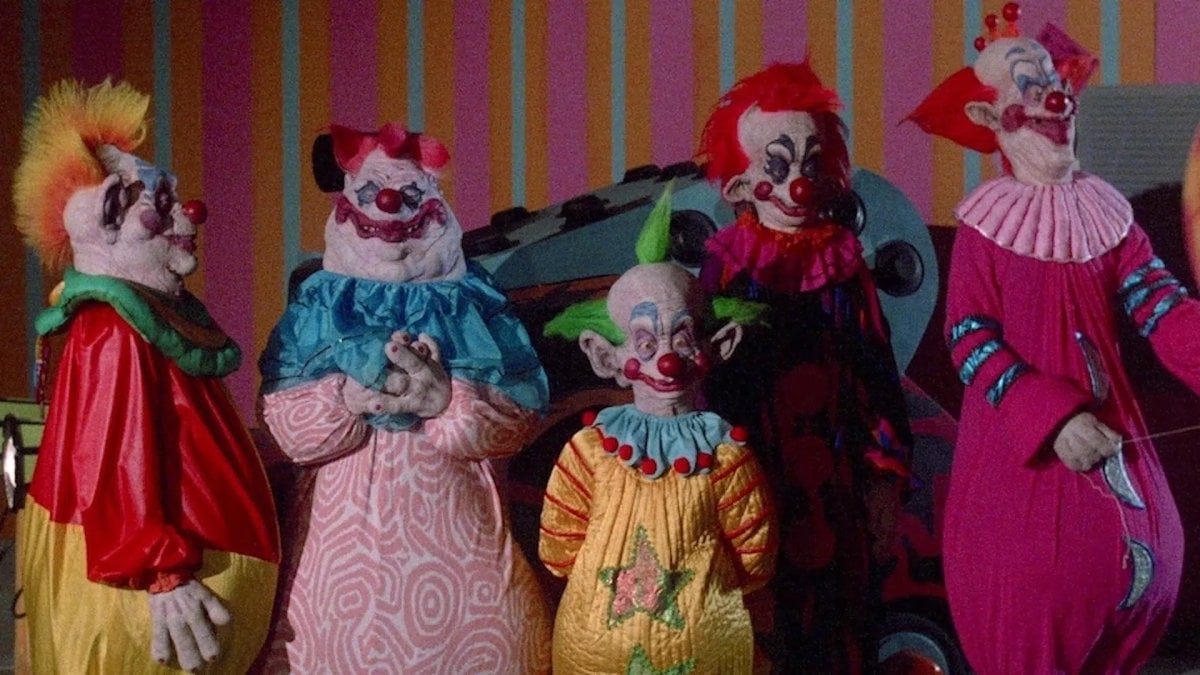
Killer Klowns from Outer Space is one of horror’s most prominent, bona fide classics. But what kind of horror fan does it make me that it wasn’t until Night Frights LA that I had the chance to watch it finally? I knew a lot about this film, but my general distaste for horror comedies overrode any box I needed to check to be considered a “horror fan.” When I heard that Horror Press was sponsoring a screening of Killer Klowns at Night Frights LA with composer John Massari in attendance, I figured, what better time than now to check it out!
Falling in Love with John Massari’s Killer Klowns Soundtrack
I listened to the soundtrack on the flight out to LA, and I loved it. There’s this brilliant mixture between camp and terror that brings an uncomfortable levity to it. Seeing it finally overlaid on the film just amplified how incredible an artist John Massari truly is. Getting to hear him talk about this project was truly enlightening, both as a new fan of his and as a creative.
John stated involvement in the project came on the wings of a friend. He was bopping around between commercial projects when a friend mentioned that someone they knew (the Chiodos) was making a film. So, John sent some of his compositions as an audition and eventually was able to get a (scoreless) screening of the film at Warner Bros. Studios. Music is an integral part of film, and a part of my brain can’t even fathom watching a film without a score. But it was the scene where the tent in the forest was found that solidified John’s love for this project.
Inside the Creative Process: Scoring Killer Klowns’ Marching Scene
How exactly does a composer go about their work? For John Massari, part of Killer Klowns was with him his whole life. The scene in which the klowns are marching into town would eventually be scored with a composition he wrote when he was in high school! He wrote the composition for his band, but they deemed it too jazzy and refused to play it. It would later come to light that John was awarded the composition job from that piece alone.
Massari seems like an incredibly down-to-earth guy who knows what he wants out of life. That part of his story really stuck with me. “Not everything you do is going to be accepted immediately by everyone. That doesn’t mean you have to discard it,” he said.
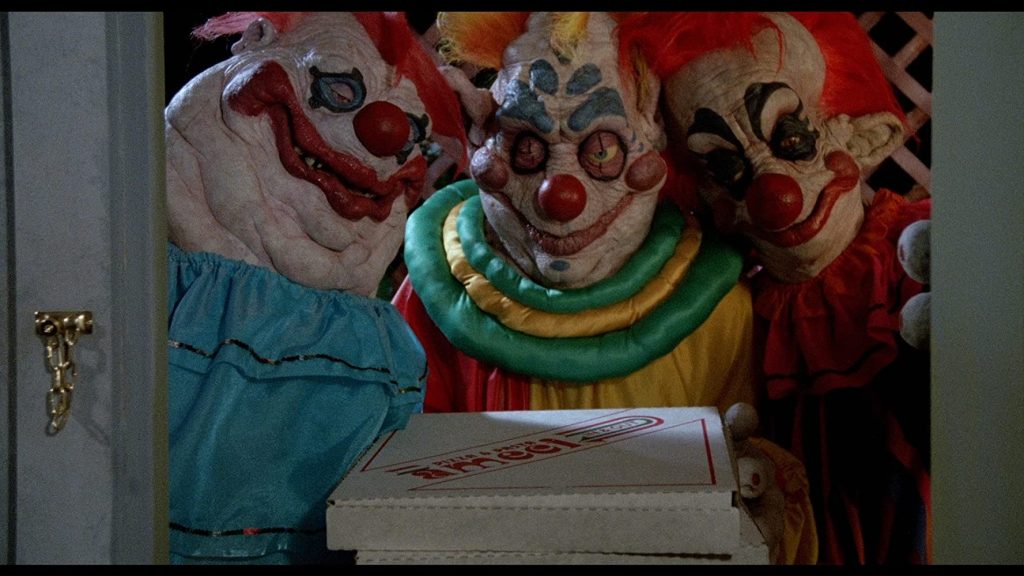
Crafting the Full Killer Klowns Score: References and Storytelling
When it finally came to creating the full composition for the film, it seems he had fairly free rein to do what he wanted. Although the Chiodos did stick their hands in the pot a few times. They made John aware of certain films they wanted him to avoid when pulling reference for his work. Some of these films, John clarified, are what we consider classics today. John’s final composition for the film tells a story of its own; rarely do you hear a score that tells its own front-to-end story. The spaceship, he said, was viewed as a princess’s castle while the klowns marching into town were meant to resemble tanks driving into Poland.
One of the most interesting stories John regaled was about a significant roadblock that occurred toward the end of production. Someone from the production side requested that John be the one to pay for the film’s Dolby Stereo licensing fee. Thankfully, John and the Chiodos shot that down quickly. You wouldn’t ask the cinematographer to pay for film processing fees, would you?
John Massari’s Enduring Pride in Killer Klowns from Outer Space
It’s clear that he has ALWAYS been proud of his work on Killer Klowns from Outer Space. Even when friends told him that maybe he shouldn’t tell people he worked on it. However, around 2010/2012, he noticed a shift in thought regarding the film. The sands shifted from viewing Killer Klowns as “so bad it’s good” (my words) to just a pretty darn good film. After finally getting to watch it, I agree.
Massari revealed something that got the entire crowd amped up…he’s re-recorded the score. COVID was a hell of a time for all of us. While most of us were drinking and playing video games, John was making art. He didn’t change the score; he just made it fuller. And he promises that the rescored composition still goes with the version of the film we’ve all seen and doesn’t change the overall tone or feeling.
New Killer Klowns Soundtrack and Screenings
Thankfully, there is a record company (not Waxwork) that is interested in releasing the new composition to the world. At some point, we can hope for a CD and a streaming release. But maybe there’s a chance for some limited screenings to pop up with the rescored composition!
Thanks to John Massari and the Night Frights crew for making this day and event happen. Watching Killer Klowns from Outer Space with John in attendance was a bucket list item I didn’t even know was on my list! Do yourself a favor, don’t waste 31 years of your life not seeing this movie. If you haven’t…do it!























